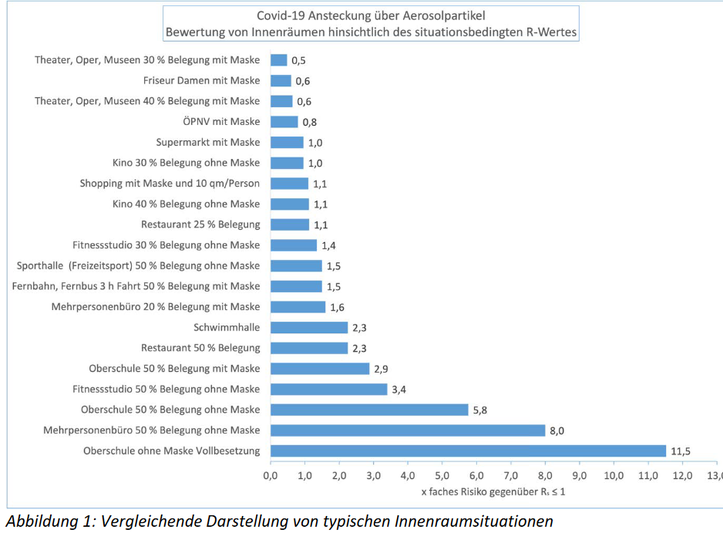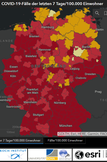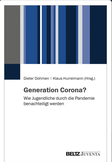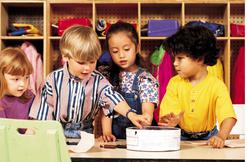Continuation: Possibly the 3rd Corona wave is approaching. What to do if it really comes?
Part 2: Consequences for day care centres and schools
The first part (see here) described the current developments and the possible consequences for the coming weeks. It seems realistic to assume that the infection figures are likely to rise again soon and that the risk for children and adolescents could become greater.

Opening of day care centres and schools
Last week, the first federal states already started opening day-care centres and schools again, and most of the other states will follow suit in the coming weeks. Some already next Monday (22 February), the others mostly on 1 March. See the regulations in your state here.
Even if "opening up" does not mean that all children will go to daycare or school every day as normal again: In the day-care centres, the capacity is increased again somewhat. In the schools, there is usually alternating teaching with smaller (halved) classes - however, there are very different concepts here: in some schools, the children go to school for a few hours every day, some in the morning, others in the afternoon. In other schools, the pupils alternate on a daily or weekly basis.
No matter which concept is applied in the individual case, there will in any case be increased contact of the children and adolescents with the outside world. And with this, the risk of infection is very likely to increase, even if there are various precautionary measures.
How high is the risk of infection for children and adolescents?
There is still no clear and scientifically proven knowledge of how high the risk situation for children and adolescents really is. This also applies to the question of how great the danger really is in daycare centres and schools. There are still contradictory studies, some of which conclude that the risk is lower than for other age groups. Other studies come to the conclusion that the risk is just as great as for other age groups. This is true even though the 7-day incidence for children still seems to be lower than for other age groups. It is also notable that the decline is much weaker than for all other age groups. It was also pointed out that this smaller decline was also particularly odd in that the frequency of testing had declined much more than for other groups. This would mean that children were tested less frequently, but then also infected much more often.
Where is the risk of infection for children and young people particularly high?
A study by scientists at TU Berlin has determined how high the risk of infection via aerosol particles indoors is likely to be (see the figure above: source: https://depositonce.tu-berlin.de/bitstream/11303/12578/5/kriegel_hartmann_2021.pdf). It shows that the risk varies greatly and is influenced by other factors. The fewer people in a room the better, wearing masks helps, etc. And yet, some situations in which children or adolescents are also present are particularly risky.
If we now look at where children are more or less at risk, several situations are particularly striking: in a crowded secondary school class where the pupils do not put on a mask, the risk of catching the disease is eleven times higher than in a supermarket where the masks are put on. Even if the class is only half full and the students have masks on, the risk is still three times higher than in the supermarket.
How great the danger is on the bus or train, for example, on the way to school, depends on the load and whether masks are worn or not. The duration of the journey also plays a role. For example, the figure only shows an increased risk by half for a longer train journey, in this case three hours, with half the occupancy, despite the mask (compared to a stay in the supermarket with a mask). In contrast, the journey by bus or train (public transport) with a mask is shown to have a slightly lower risk than the supermarket with a mask. However, I am irritated that no value is given for the occupancy rate or the duration of the journey. To that extent, I wouldn't recommend parents put their child on the bus or subway during rush hour. Quite the opposite - I prefer personal transport by car.
What does this mean for open daycare centers and schools or school attendance of the child?
Even though I think it is very important for some of the children to return to daycare and especially school as soon as possible (see here), I think the overall risk is comparatively high. This is especially true if they increase the infection numbers again and the British mutation continues to gain traction. If the two come together, then I expect nurseries and schools may close again. But that also depends on what political pressure is made in one direction or the other.
If you as parents can "afford" it and can support the child at home in learning, then I personally would rather keep my child at home. However, I would also look at how the child is doing with it. If the child is doing well with staying home, then it is easier. If the child gets restless, the mood is bad, then I would look at going to school at least once in a while and bring them to school by car or bike.
It becomes difficult when compulsory attendance is not lifted, which seems to be the case in some countries. Then parents actually have no freedom of choice and the child must strictly go to school.
I would make a different assessment if parents cannot support their children or can only do so to a limited extent. The same applies, as already briefly described, if the child suffers health-wise or psychologically from staying at home for weeks or months. This is especially true if there are other risks for the child, for example, if the parents are also at the end of their tether and/or are on the verge of burnout, etc.
Published on
Topics
Articles on the topic
-
How do I find a school place for my child?
Depending on the state and type of school, different things need to be...

-
Childcare - how does it work in Germany?
The path from application to daycare place is simple and complicated at...

-
Controversy: open schools or close schools?
Politicians should react now to slide unprepared into a forced closure....

-
Corona pandemic severely disadvantages children and young people - but there is no "Corona generation"
This is a core finding of the anthology "Generation Corona? How young...

-
What to do after the Easter holidays? - Part 2: Final exams
An overview of the regulatory diversity

-
Kitas and schools in a state of flux
Update from 9.4.2021 on the current regulations
